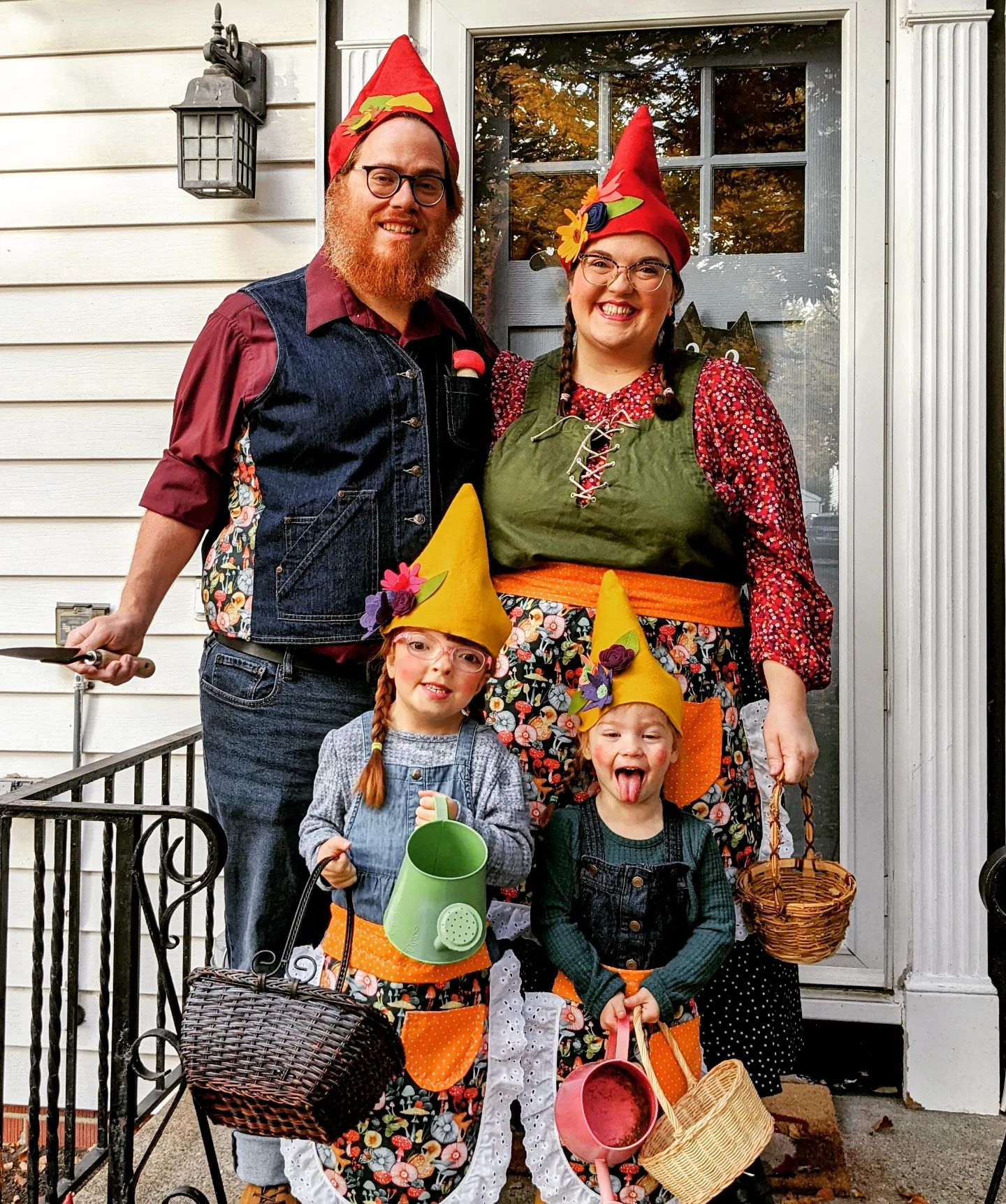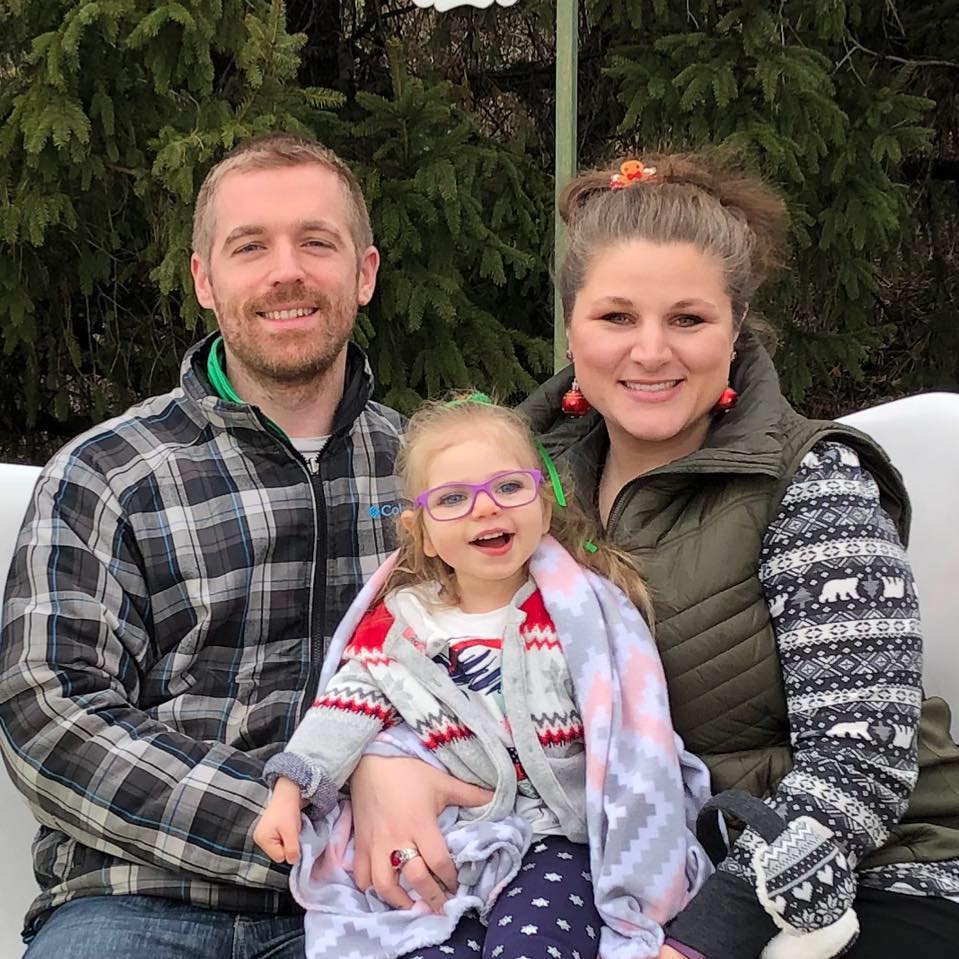About
We started as coworkers, but quickly bonded over our shared, yet unique, experiences as parents of disabled children. The more we talked, the more we realized that we shared the experience of information-overload and unanswered questions in the early days of our child’s diagnosis. We craved community and while we were respectively part of diagnosis-specific social media groups, the members of those groups were spread across the globe. Nothing could quite replace the collective resources, experiences, and yes, even tears, that the three of us have shared with each other. We have created a cross-disability community of care and we’d like to share that with you.
We welcome you with open arms, open minds, and open hearts!

Alysha
Hello, my name is Alysha! My pronouns are she/her. I have long, curly brown hair and wear glasses. It is very nice to meet you! I am a proud, born and raised Toledoan who has dedicated much of my life to education, from forcing my little brother to play school with me during summer breaks, teaching English and humanities courses at the college level, and supporting college students in my current role as a Success Coach at the University of Toledo where I met Gina and Brittany. In addition to my bachelor’s and master’s degrees in English, I am currently working towards a master’s certificate in Disability Studies. I met my librarian husband Patrick at the University of Toledo in a Shakespeare course and the rest, as we like to joke, is history. We have a five-year old daughter named Willow and a two-year old daughter named Hazel. As a family, we enjoy reading as many books as we can get our hands on (we have eight bookcases in our house and hope to create a tiny neighborhood library box in our front yard). We also love playing video and board games, spending time in nature, and crafting.
Brittany
Hi! My name is Brittany, and I grew up in Northwest Ohio where I am now raising my own family. My husband, Marshall, and I have a three-year-old son named Oliver. I hold a bachelor’s degree in Bioengineering, a master’s degree in Counseling, and am currently working towards a graduate certificate in Disability Studies. I work as a Success Coach in higher education where I enjoy helping college students discover and work towards their passions and try to advocate for equal education opportunity. When not working or with my family, I enjoy participating in community theater both as a performer and choreographer.

Gina
Hello! My name is Gina. My pronouns are she/her, and I am from the Southeast Michigan/Northwest Ohio area. I have been married to my husband, Brennan, since 2011. We accidentally met on MySpace in 2006, but that is a story for another time! We have an almost seven-year-old daughter named Angela. I hold a bachelor’s degree in Psychology, a master’s degree in Educational Technology, and am currently working on a master’s certificate in Disability Studies. I work full-time in Higher Education as a Success Coach and love every aspect of my job! Community has become an important part of my life, and I am happy you have found your way to us!

A Quick Look at Disability History in Ohio and Beyond
1920
The Ability Center (formerly Toledo Society for Crippled Children) formed to provide care for disabled children who were not welcome in public schools and often went without proper care due to institutionalization. After the passing of the Americans with Disabilities Act, the Ability Center shifted towards providing resources for independent living, advocacy, and peer support. [25]
1923
The Sight Center (formerly Toledo Society for the Blind) was founded. The non-profit currently provides rehabilitation services and resources for independent living for those with limited vision and Blind individuals in Northwest Ohio, Southeast Michigan, and Central Ohio. [4]
1943
Public Law 16, separate from the GI Bill, is established, emphasizing vocational placement for disabled veterans. Disabled Veterans who wanted access to higher education faced several obstacles. [31]
1948
University of Illinois-Galesburg campus admits 18 disabled students, setting the stage for access to higher education for disabled students. [31]
1968
Autism Society of Northwest Ohio (ASNO), a chapter of the Autism Society of America (ASA) was founded. ASA is the oldest and largest autism-related grassroots organization in the country. ASNO provides Autistic individuals in NWO referrals to community resources, hosts educational seminars, and assists with Individuals Education Plans (IEP). [23]
1972
The first Center for Independent Living (CIL) was established, emerging from the independent living movement that came out of the 1960s. This movement pushed the idea that “people with disabilities are the best experts on their lives”. [28]
1973
The Rehabilitation Act prohibits employment discrimination on the basis of disability at the federal level (meaning, places receiving federal funds).
1973
Disabled in Action (DIA) was formed by disability rights activist Judith Huemann and others. The goal of DIA is to “To raise consciousness among people with or without disabilities concerning ableism, paternalism and derogatory attitudes, as well as laws and customs that oppress disabled individuals in American society.” DIA has played a massive role in enacting social change and legislation. [2]
1975
Education for All Handicapped Children Act, later renamed Individuals with Disabilities Act [IDEA] passed, which mandates access to public education for children with disabilities in the least restrictive environment. [28]
1977
Section 504 Protest leads to the victorious implementation of Section 504, which addressed the “attitudinal and architectural barriers” that disabled individuals faced and declared that “recipients of federal funds could not discriminate on the basis of disability” which led the way for new organizations and more major changes to come. [28]
1978
National Council on Disability (NCD) was established, first as a small advisory council within the Department of Education. Now the NCD is a trusted governmental advisor tasked with “analyzing the needs of people with disabilities, crafting policy solutions, and advising the President and Congress.” [3]
1981
Mrs. Bettye Ruth Kay and the Autistic Community of Northwest Ohio purchased 80-acre farmland started construction of Bittersweet Farms, the first farmstead program for adults with autism in the United States, providing residential, vocational, transitional, and recreational services to Autistic individuals. [18]
1982
The Anne Grady Center (formally Decem Center) in Holland, Ohio was formed in answer to the concerns that parents of mentally and physically disabled individuals had about institutionalization. The Anne Grady Center offered a “healthy, friendly…living space for all” while also providing various occupational and physical therapies. [41]
1983
1990
Americans with Disabilities Act (ADA) is passed after nearly a year of protests, solidifying the civil rights of disabled individuals, as it is “one of the most expansive civil rights laws in American history and the first comprehensive disability rights law in the word.” The ADA prohibits the exclusion and discrimination of disabled individuals in areas such as employment, public accommodations, transportation, and access to government programs. [28]
1999
The U.S. Supreme Court made the landmark decision in Olmstead v. L.C. in favor of Olmstead affirming “the right of disabled Americans to spend their days in integrated settings” and prohibits the unnecessary segregation of disabled individuals. [8]
2008
2019
Disability Pride Flag created (revised in 2021), each color representing a different type of disability: physical (red), cognitive and intellectual (yellow), invisible and undiagnosed (white), psychosocial (blue), and sensory (green). The charcoal background symbolizes mourning and rage for the victims of ableist violence and abuse, and the colored bands are placed diagonally to convey persons with disabilities “cutting across” societal barriers. [24]
2022
Ohio Govenor Mike DeWine signs Senate Bill 239 which included a budget of $25 million to fund the Community Capital Assistance (CCA) program which builds, buys, and renovates homes for independent living options across the state”. [16]